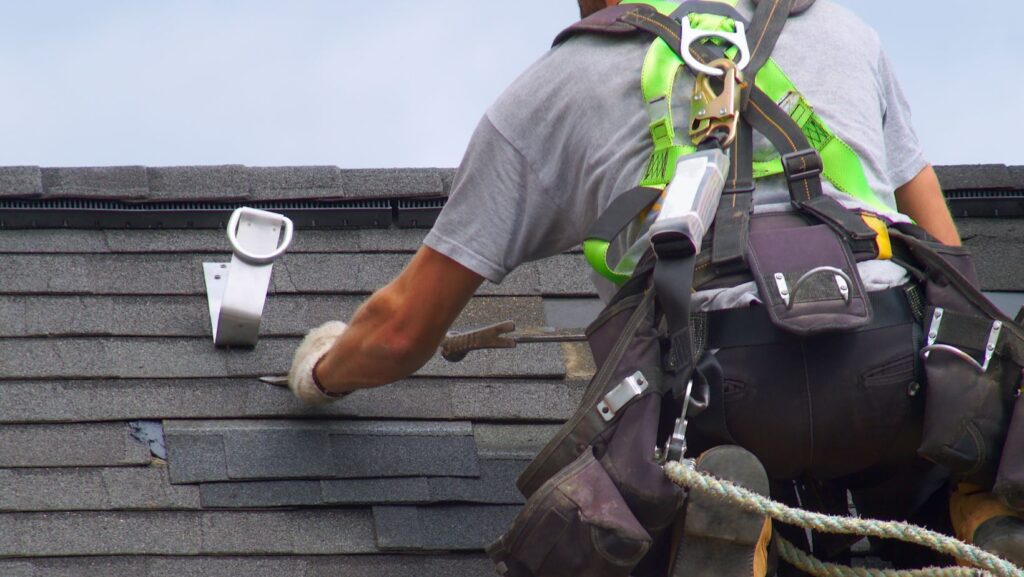Table of Contents
ToggleIntroduction
A clean roof isn’t just about curb appeal—it’s about protecting your home. Imagine buying a brand-new car and never washing it. Dirt, grime, and weather would wear it down quickly, right? Your roof works the same way. Regular cleaning keeps it looking fresh and extends its lifespan.
If you’ve noticed black streaks, moss patches, or leaves sitting for months, your roof is asking for help. Don’t panic—this guide walks you through everything you need to know to keep your roof looking brand new.
Understanding Roof Cleaning
Roof cleaning is more than aesthetics—it prevents structural damage, water leaks, and costly repairs. Many homeowners don’t think about the roof until there’s a problem. But prevention is cheaper than cure!
Common Roof Contaminants
Moss
Moss looks harmless, but it grows roots that lift shingles and trap moisture. Left untreated, it can rot your roof.
Algae & Black Streaks
Those ugly dark lines? Usually algae. It thrives in humid areas and loves shaded roof surfaces.
Lichen
This stubborn mix of fungus and algae sticks tightly to shingles and causes surface damage.
Debris & Dirt
Leaves and twigs trap moisture and create the perfect environment for mold and rot.
DIY Roof Cleaning vs Professional Services
Benefits of DIY Roof Cleaning
- Saves money
- Gives homeowners control over products used
- Great for small maintenance tasks
For simple debris removal or light algae spots, DIY might work fine.
Why Hiring Professional roof cleaning services Can Be the Perfect Option
Professional cleaners bring expertise, safety knowledge, and proper equipment. They know the right techniques to clean without damaging shingles.
So, if your roof looks like a small jungle or you’re not comfortable climbing ladders, calling roof cleaning services is the smart move.
Safety Tips Before You Start Cleaning
Roof cleaning isn’t worth risking your life. Safety first—always.
Roof Safety Equipment
- Non-slip shoes
- Safety harness
- Gloves & goggles
Weather Considerations
Clean on a clear, dry day. Wet roofs are slippery and dangerous.
Ladder Safety
Use a sturdy ladder, secure it properly, and never climb alone.
Roof Cleaning Methods
Soft Washing
Best for most roofs. Uses low pressure and cleaning solutions to gently remove stains and growth.
Pressure Washing
Effective but risky. Too much pressure can damage shingles. Usually for metal or tile roofs only.
Chemical Cleaning
Special roof-safe solutions dissolve stains and kill biological growth.
Eco-Friendly Cleaning
Baking soda, vinegar mixes, and biodegradable cleaners are safe for environment-conscious homeowners.
Step-by-Step Roof Cleaning Guide

Step 1: Inspect Your Roof
Look for cracked shingles, soft spots, or heavy moss.
Step 2: Prepare the Area
Move outdoor furniture, cover plants, and block downspouts if using chemicals.
Step 3: Choose the Right Cleaner
Pick a roof-safe product that targets algae or moss.
Step 4: Apply Cleaning Solution
Spray evenly and let it sit—just like marinating food for best results.
Step 5: Rinse and Check
Rinse gently, inspect stubborn spots, and repeat if needed.
Preventive Care to Keep Roof Looking New
Trim Nearby Trees
Branches create shade and drop debris. Trim them to reduce algae growth.
Install Zinc or Copper Strips
Rainwater activates the metal and naturally prevents moss.
Schedule Regular Cleanings
Once a year keeps the roof in top condition.
Maintain Gutters
Clogged gutters lead to water backup and roof moisture problems.
Best Practices for Different Roof Types
Asphalt Shingles
Use soft washing and avoid scrubbing to protect granules.
Metal Roofs
Pressure washing works, but use low-pressure settings.
Clay & Concrete Tiles
Soft wash with mild cleaners to avoid surface cracks.
Wood Shake Roofs
Use oxygen bleach—not chlorine—to preserve wood fibers.
Roof Cleaning Mistakes to Avoid
Using Harsh Chemicals
Bleach and acidic products can damage roofing materials.
Over-Pressure Washing
Too much force strips protective layers and shortens roof life.
Ignoring Safety
Falls are a leading cause of DIY home injuries—don’t become a statistic.
Conclusion
A clean roof isn’t just beautiful—it’s a smart investment. With regular maintenance, gentle cleaning methods, and some preventive care, your roof can look new for decades. Whether you go DIY or choose professional roof cleaning services, the key is consistency. Treat your roof like the crown of your home—because it is!
FAQs
1. How often should I clean my roof?
Once every 12–18 months is ideal.
2. Can pressure washing damage my roof?
Yes, especially asphalt shingles. Use soft washing instead.
3. What’s the safest cleaner for roofs?
Eco-friendly or roof-approved cleaning agents work best.
4. How do I remove algae stains?
Use a soft wash solution designed for algae removal.
5. When should I hire professionals?
If your roof is steep, heavily stained, or you’re unsure about safety.

